The WiiU’s out, the Playstation 4 has been announced and rumors are that Microsoft has plans to reveal their Xbox 360 successor in the coming months. I may be reaching here but it sounds like this generation is coming to a close and with that, we probably won’t see many more physical Sega releases on the current consoles.
Looking back, Sega fans did get a lot of quality releases from their publisher of choice but unfortunately many of them weren’t that great of successes and many new IPs and series seem to be forgotten and left in the dust as we move onto the new generation. We take a look at 10 of our favorite games this generation that we feel were underplayed and underappreciated and what that means for the games and franchises overall.
Hit the jump to read out list of 10 underplayed games!
Aliens: Infestation
Stevie Grant: With all this controversial Colonial Marines business going on it can be easy to forget just how good Aliens is as a franchise. Especially on the videogame side of things which (because of this recent news item) will be tarnished just by being in relation to Gearbox’s recent critical flop. This is all very unfortunate as people might now unfairly write-off the 2011 under loved classic Aliens: Infestation.
Aliens: Infestation is a Metroidvania type game that pushes all the right buttons in terms of fun and unexpected horror. The fear is genuine as the game builds it’s time getting you into it’s creepy and lovingly designed pixel universe. WayForward do an awesome job with the art and atmosphere, which somehow crafts a sense of fear on a tiny GBA screen. This short blast of a game also features a very unique life system unlike any I’ve seen before. Technically you have a squad, but they will never come out to help you. Instead they’re your lives. When you die, you simply change characters, however the twist is you can only have a set number of characters, and when you’re out that’s it. Your unique characters are gone and you start all over again. Game over man, game over!
All of these elements combine with a fun play style to create a future classic. As I mentioned it is short but if you see it knocking about (it’s super cheap and easy to find) and you want your faith restored in good Aliens media, then Infestation just might be the underplayed gem for you!
Anarchy Reigns
Mike Kyzivat: Now this is a great game that deserved more attention, although I can understand why people would be put off by Anarchy Reigns. Anarchy Reigns is a strange and quirky game (I expect no less from Platinum), but it’s strange and quirky in a good way. Imagine a game that plays like a mix of Gears of War and Street of Rage and you are getting the right idea. It’s a multiplayer arena fighter with strange characters and even stranger levels. And because its structure is half first person shooter and half fighting game I think that is it’s biggest strength and weakness. On one hand you have a great mix of first person shooter modes and levels with melee combat and super moves, but on the other side of the spectrum, because it does both, it can alienate fans of each genre it mixes. First person shooter fans like the big levels and FPS like modes, but could be turned off by the lack of weapons and its 90% melee attacking and dodging; which is not prevalent in FPS. Fighting game players like the combat but may be turned off by the expansive levels and multiple people in one area. In other words, it’s not enough like a FPS for the average shooter fan and it’s not enough like a fighting game to the average fighting game fan. But for people who enjoy both types of games (like me) it’s a great idea that is (for the most part) well executed. I don’t think much would be different if the game had been a big success as Platinum doesn’t usually make sequels, but at least there would be more people playing on the servers then there are now. And maybe SEGA would be more willing to take chances on other games that bend genres. At least we can be happy that Anarchy Reigns made it to a U.S. release.
Binary Domain
Tommy Carver-Chaplin: In an ideal world, the name Toshihiro Nagoshi would be a game seller. In that world, western audiences would purchase enough of his games that we wouldn’t currently be sitting, waiting, for Yakuza 5’s localisation. This is the real world though, where fairytales don’t exist, dreams die and Binary Domain isn’t on the tip of every shooter fan’s lips.
From the team behind the Yakuza franchise and another Nagoshi lovechild, Binary Domain was a breath of fresh air in a largely uninspired third-person shooter crowd. Tokyo’s broken city scape was haunting and mesmerising elsewhere, the actual gun play was a visceral, rewarding experience as bits of robot flew in all directions and most impressive was the Trust system. Throughout the game player decisions not only had a direct effect on the story but actually your party’s opinion of you too. You can even converse with these characters in an attempt to improve or sacrifice trust you have, with what initially looks like a gimmicky feature really justifying its worth late game in a sense of immersion that many other games simply don’t have the potential to achieve.
But as said, this is the real world and Binary Domain didn’t sell amazingly, if even okay. While it had the struggle all new IPs suffer, what really held it back is a saturated market and and significant lack of marketing in the west. Customers were so engrossed by testosterone-fueled average shooters and their sequels which were in an abundance in the Gears of War mold that it simply would never have got a look in. It’s a shame because you probably won’t see a Binary Domain 2, and it’ll be another five Yakuza titles before we see another original alternative.
Condemned 2
Josh Newey: In the last few years, as nearly all of the horror mainstays have either grown weary and frustrated (Silent Hill) or just succumbed to the fail-safe allure of following in the footsteps of actual innovators (Resident Evil), it’s painful to look back at what could have been for my favorite genre. Monolith’s Condemned series, while deeply flawed in many ways, grabbed the reigns of a placid sea of tropes and thrust it into a whole new direction that upended a lot of what we came to expect. With a unique first person combat system and a relentlessly gritty and unabashedly perverse Se7en-esque motif, this bizarre franchise represented Monolith’s willingness to take chances–a trait that’s woefully lacking in most developers these days.
As a launch title for the XBox 360, Condemned served as a beacon of where new technology and ideas were going to take us in this generation. Condemned 2 managed to repair a lot of issues in the first game, spicing up the repetition and overt simplicity of the investigation bits, adding complexity to the sometimes arbitrary combat, and changing the once tragic hero into an angry, vicious, almost inhuman antihero. At the same time, pressures of the modern industry managed to draw focus away from what made Condemned work, adding in a needless and taxing multiplayer mode that allegedly sapped team members away from tweaking and polishing the main campaign. Besides these issues, Condemned is also one of the few remaining examples of a dying notion in modern gaming–the console exclusive.
It’s likely we’ll never see a third entry in the series, despite general critical acclaim and a small but fervent fanbase. If that’s the case, it’s a damn shame that one of Sega’s most potential-laden modern franchises got stamped out so quickly, seemingly as repentance for bowing to an industry that’s notorious for making sweeping generalizations about what all games need in order to sell. If the series utilized a solid marketing campaign, refocused its emphasis on single player, and branched out to all HD consoles, I really think horror fans would be thirsty enough these days to give it a try. Condemned 3? PLEASE?!
Full Auto 2
Scott Morrison: Full Auto 2 is a great brainless, chaotic romp in the line of vehicular combat with an emphasis on racing and rivalry. I enjoy Full Auto 2 more than its prequel, because it added arena-type battles that were reminiscent of the Twisted Metal series. The game allowed you to only equip 2 types of weapons to your vehicle, which allowed for a bit of strategy and balance by deciding the best way to destroy enemies behind you with oil slicks or land mines, while debating if flamethrowers or missile launchers were more effective up front. However, it was only appropriate to max out your firepower with missile launchers and grenades on race-battles against rivals in hopes of destroying their co-harts within the first 10 seconds of a race. The most satisfying moments in the game were each one of your successful kills as the game slowed down into a “bullet-time” effect whenever an enemy was destroyed.
I think this game suffered from poor marketing, and I base this on the fact that I did not even know of its existence until a solid year after its release, even though I owned a PlayStation 3 during the game’s launch. What also boggles my mind is the fact that the prequel was released only on Xbox 360, and that Full Auto 2 was only released on PS3, with a dumb-down port of the game on PSP. The series would have sold much better if Sega released each iteration on every console rather than jumping around sporadically. Logically, if a person became a fan of the first game, they would want more, but would they really buy another system just for the next Full Auto? It seems like someone in development was a bit confused on what system to convey their focus. I feel like the Full Auto series could have given the Burnout series a run for its money, had all the games been released on multiple consoles.
House of the Dead: Overkill
Tommy Carver-Chaplin: House of the Dead: Overkill is symbolic of the potential the Wii had establish a mature audience outside of the family fun market they so heavily tried to corner, accompanied by another Sega-published title, Madworld. Though it was still a multiplayer game great for get-togethers, it was clearly for older players. It didn’t carry the same seriousness and weight that previous entries in the series had, but instead this time pulled off a Grindhouse aesthetic that’s not been so successfully executed in any other title. The writing was solid and caused volatile laughter in regular bursts, with a eclectic cast of characters plucked from real life and fiction in a strange amalgamation that just worked fantastically. Most of all though, the gameplay was relentless and adrenaline pumping, so much to the point I’m surprised I never broke my official Hand Canon accessory.
Ultimately the game sold reasonably, but it never had a chance to blow; Nintendo, for a long time and especially at the start, so consistently forced down throats the idea that the Wii was a family console for family games through marketing and library saturation that it worked. There were still older fans on the console, but the mass market was children and House of the Dead: Overkill was more than just niche, it was also strictly not for children. Alone, House of the Dead: Overkill could have never have been a game changer, but if Nintendo had balanced their priorities and focused on substantial, mature titles too from the get go it might have even saved the console’s premature decline.
Madworld
Josh Newey: Poor Platinum. Despite pumping out what are hands down the most unique, bizarre, and action-packed Sega games this generation, only Bayonetta really got the attention it deserved, ostensibly due to the pedigree of Devil May Cry mastermind Hideki Kamiya. But despite that fact, MadWorld has at least managed to drum up a fair amount of players and support since its depressing launch way back in 2009. Even to this day, I hear it being brought up as a noteworthy and visually remarkable experience on the Wii, for its stark black and white (and red!) visuals, its creatively violent gameplay, and the fantastic vocal performances of announcers Joe Dimaggio and Greg Proops. While I’m not sure Sega’s modern marketing tactics (or lack thereof) would have gotten Madworld to sell more on HD consoles, I do think the martyr-like role as THE proof that the Wii could cater to adults ended up killing any chances of obtaining a broad audience. Well, that and the fact that its release date fell in the often tepid month of March. This should have been an easy sell, and the buzz did exist. I just don’t think placing all those chips on a Wii-exclusive launch was the right route to take.
Resonance of Fate
Alex Riggen: It’s pretty easy to pinpoint why Resonance of Fate wasn’t a huge success. Take for instance the fact that game was released only a week after Final Fantasy 13 and you already have an idea of why no one gave Resonance of Fate a second look. It’s also incredibly hardcore as the combination of this games deep mechanics and extreme difficult ensure that only the strong and most motivated will sit the game through to its end.
However, if you can get passed these hurdles, Resonance of Fate has a lot to offer. The combat system is unique and cinematic, taking a quasi-realtime John Woo approach with over-the-top acrobatics and gunplay, the characters and setting are strange and quirky and feel unique from the usual amnesia stricken angsty teen hero and the game world has more in common with a grid-based tactical RPG as you move about on hexes and take over different territories to get to your next location. Resonance of Fate deserved more recognition than it got just for pushing the boundaries of what we expect from a JRPG and while it’s nice to see some characters appearing in the upcoming Project X Zone for 3DS, I’d still like to see a full sequel that fine-tuned the gameplay the first game established.
Sonic & All-Stars Racing: Transformed
Mike Kyzivat: This game is simply a SEGA fan’s dream come true, and I can’t believe it didn’t do better then it did. The game has everything going for it. It’s a sequel to a good game, its got tons and tons of SEGA fan service and it adds a new dimension to Kart racing games that nobody has done before. There is great spectacle in each race, huge explosions or deforming race tracks that not only change the race track but also change your vehicle to match the terrain. I defy anyone to play the Nights inspired track and not go “Whoa!” at least once. I really don’t know why it didn’t sell well, it got great reviews (except for the WiiU version I’ve heard) and it’s a solid game. The only thing I can think of is there just aren’t enough SEGA fans out there, but even so, I would think any player or age group would love zipping about on these immensely creative tracks, even if they’ve never heard of the games they are based on. And if this game had done better I bet we would have more DLC characters and race tracks to add to the fun. Imagine a race track based on Altered Beast or finally being able to race as Toe Jam & Earl in their UFO. Alas, I don’t think that will ever be; which is too bad because it would add so much to an already great racing game (NOTE: Statement of greatness does not include Danica Patrick).
Vanquish
Scott Morrison: Vanquish can be best summed up as a futuristic Robo-Cop on steroids. Wouldn’t you buy that for a dollar? I know I would, and I did, but for more than just one dollar. Anyway, Vanquish is a great third-person action shooter. I will admit the game can be unfairly difficult at times, which resulted in my lowering the difficulty level simply to progress without frustration. However, the ridiculous action, gigantic boss battles, and overall over-the-top attitude that most Platinum games posses really do a great job of making Vanquish one of the more entertaining experiences this generation.
I feel that Vanquish did not do as well as hoped due to the fact that the game appeared too generic to anyone who was unfamiliar with Platinum, and in turn did not attract the crowd it hoped for. At times, the game also felt like it was a Japanese game mocking Americans. Don’t get me wrong, there are plenty of things to mock about us, but this game seemed to go out of its way sometimes with the main character smoking cigarettes, cringing one-liners, and overall Die Hard appeal. Perhaps, if he really was more like RoboCop then more people could have connected to him? It would have at least sold well in Detroit.
I also don’t normally say this about games, but I feel that Vanquish could have benefited from some sort of multiplayer, or even a co-op mode. Running through the campaign with a buddy would have made some boss battles infinitely easier, and deathmatches could have also been fun, and hilarious to watch as 10 Sam Gideons were sliding around a map trying to dodge bullets. Think about it, Platinum, and then cut me in on the deal.


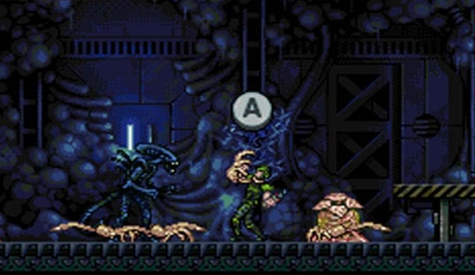
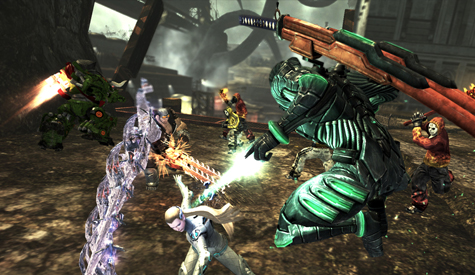
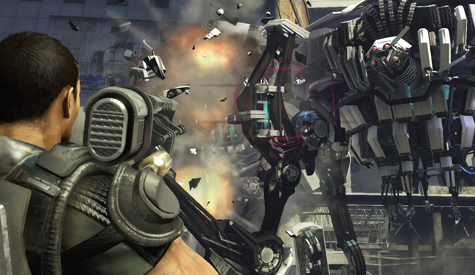
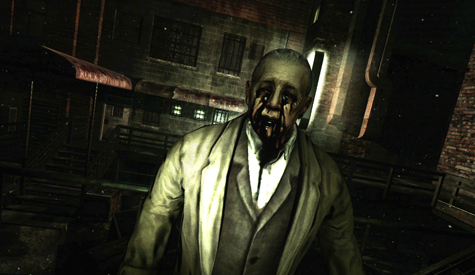

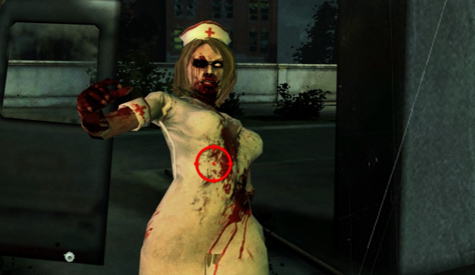
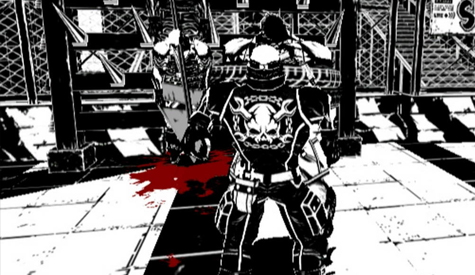

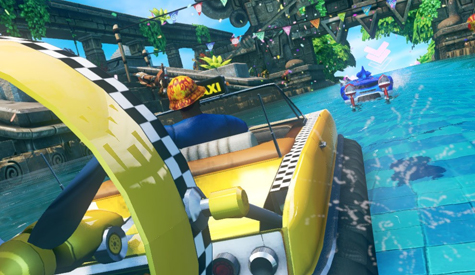
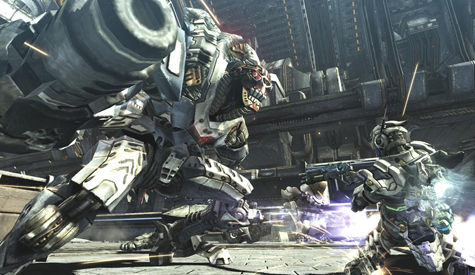

But I thought that this game sold well, 1 million units is amazing and I doubt that sega expected more
On vanquish, gotta disagree, the cigs were game play elements, the game was far from difficult (except if you played on that hardest difficulty level – god hard, or if you played the challenges)… i didn’t feel it mocked americans at all, it was an over the top story.
Multi-player would NEVER had worked because of the ARS mode would make playing annoying as hell…
The game sold well from what i know and it’s a shame that people think that a multi-player mode is the only way to sell a game, especially when most MP modes hide a crappily designed game, and Vanquish was far from crappily designed.
I do agree that it was overlooked and most likely one of the best games of the generation.